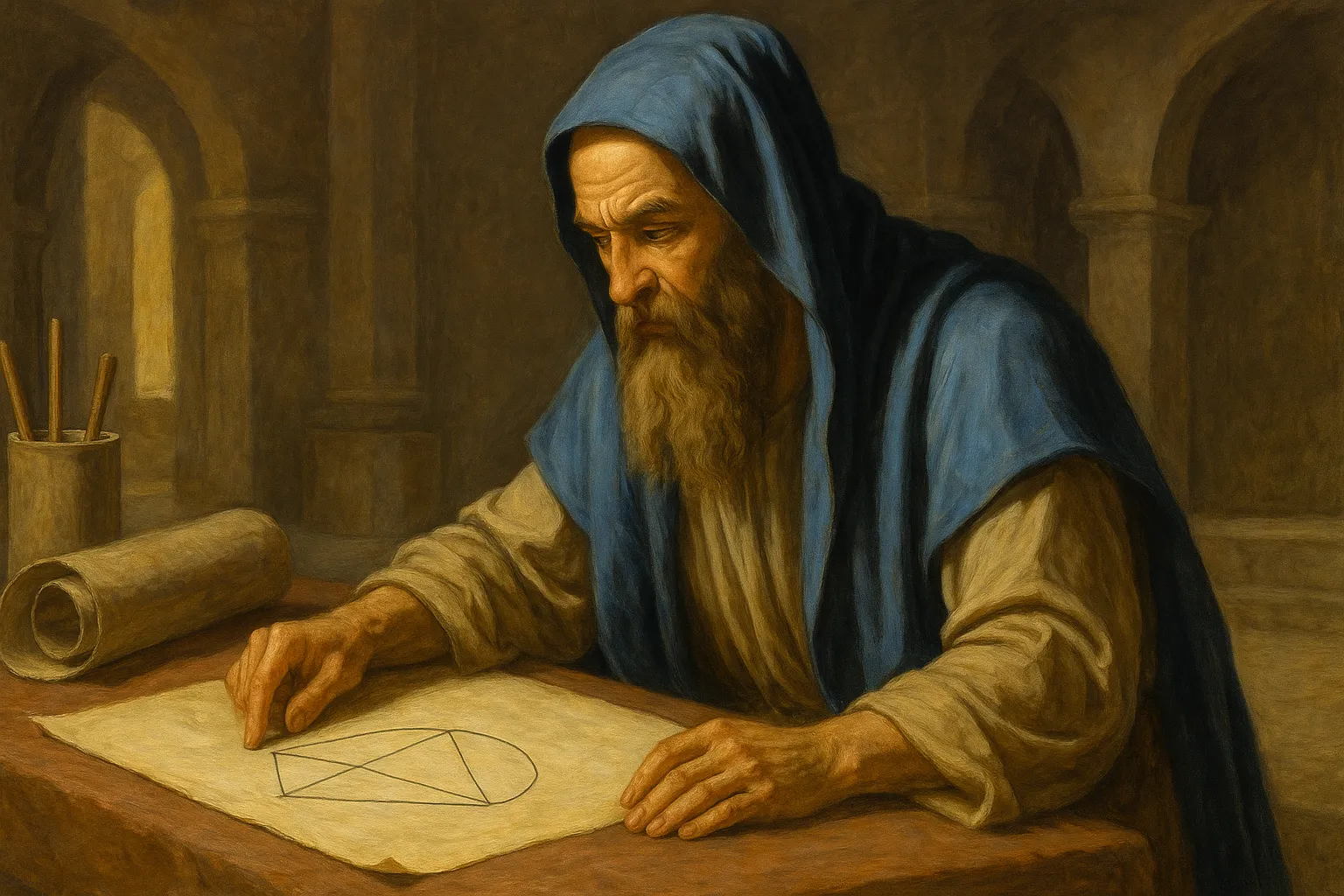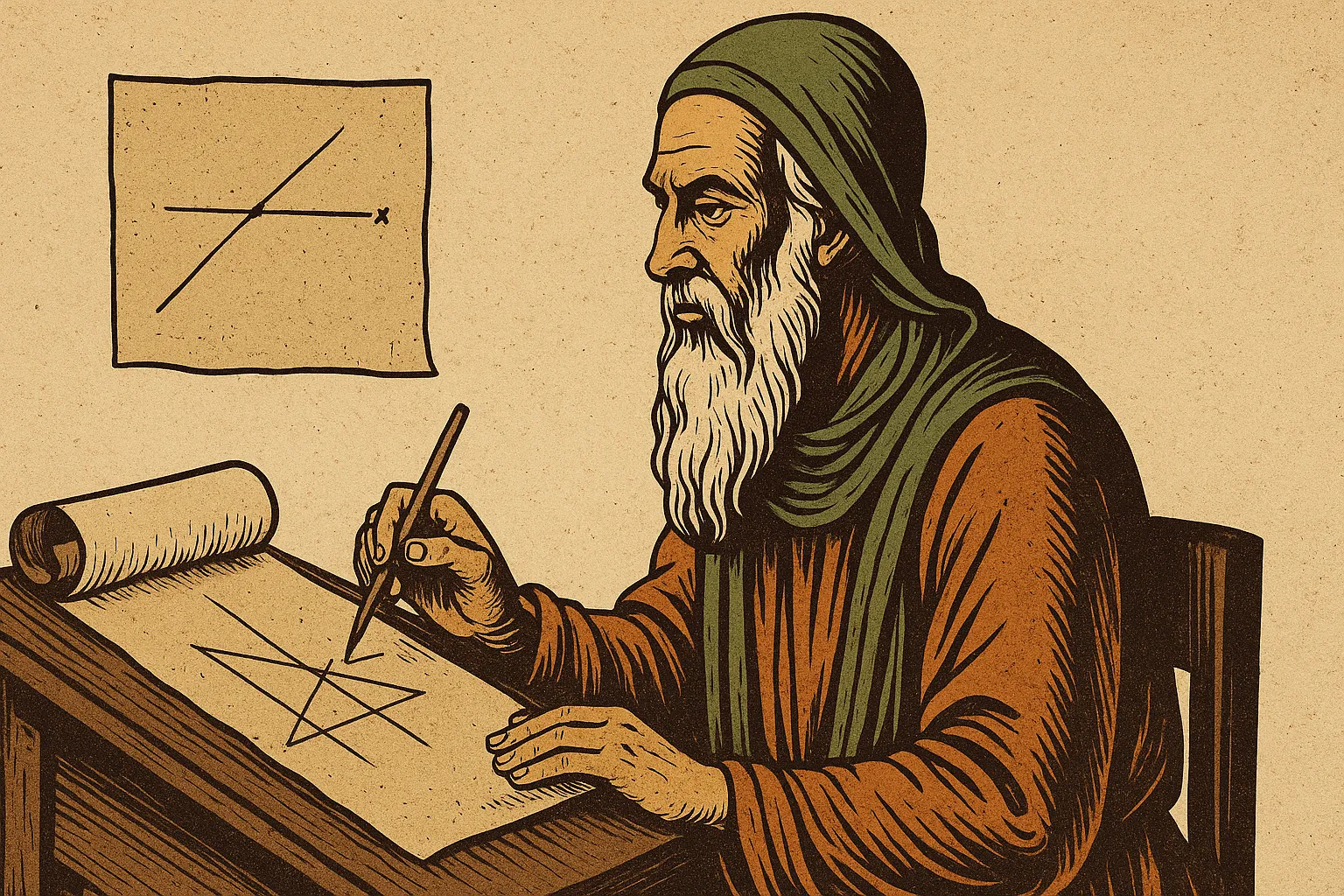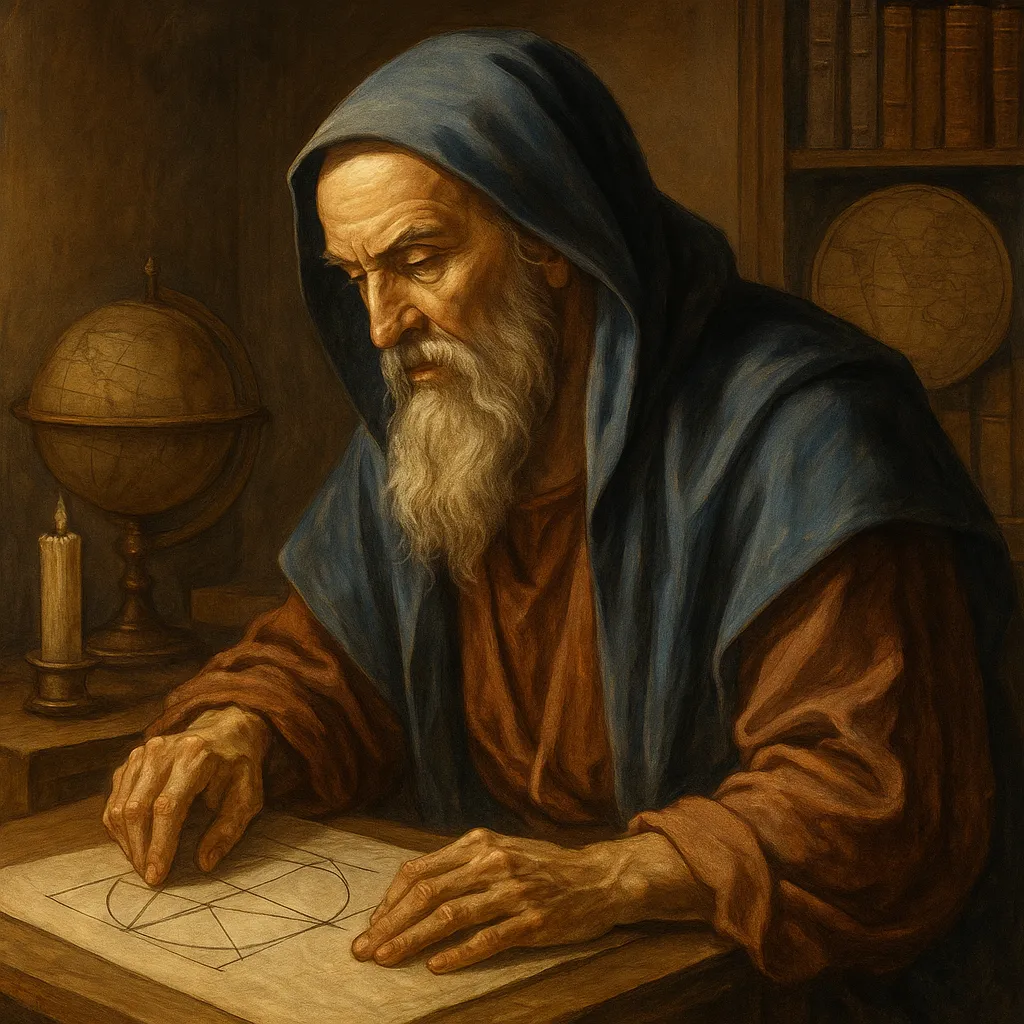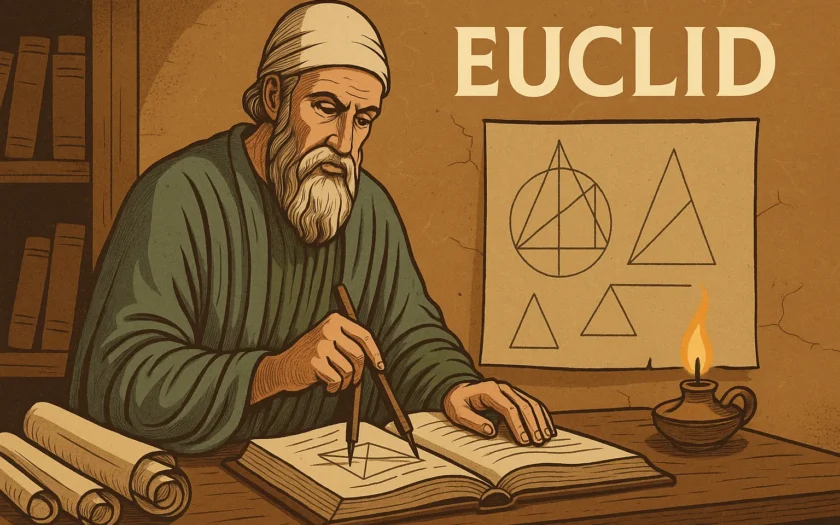The history of mathematics is filled with names that transformed human thought, but few have left as lasting a mark as Euclid. Although little is known about his personal life, his monumental work, The Elements, laid the foundations of geometry for over two thousand years and remains a cornerstone in the teaching and logical structure of scientific thinking.
In this article, we will explore Euclid’s figure, the historical context in which he worked, his intellectual legacy, and the impact of his work on the evolution of science, philosophy, and education.
Alexandria in the 3rd Century BC
The Rise of Hellenistic Science
Euclid likely lived between 325 BC and 265 BC, during the Hellenistic period—a time of cultural and scientific flourishing that followed the conquests of Alexander the Great. His activity was centered primarily in Alexandria, Egypt, under the rule of Ptolemy I Soter, one of Alexander’s generals.
Alexandria became the great intellectual hub of the ancient world, home to the famous Library of Alexandria and the Mouseion, a meeting place for philosophers, scientists, and mathematicians. It was in this vibrant environment that Euclid developed his work.
The Little We Know About His Life

A Biographical Enigma
Unlike other great thinkers of antiquity, we possess few details about Euclid’s life. No autobiographical writings or contemporary accounts survive. Most information comes from indirect references made centuries later, such as those by Proclus in the 5th century AD.
He is believed to have been a teacher at the Alexandrian school, focusing almost exclusively on pure mathematics, in contrast to other scholars of the time who were more involved in natural philosophy.
The Monumental Work: The Elements
The Book That Defined Geometry
Euclid’s great contribution was compiling and systematizing Greek geometric knowledge into his work The Elements (Stoicheia), composed of 13 books. It presents geometric principles axiomatically—starting from a few simple definitions and postulates and developing theorems through rigorous logical demonstrations.
The early books cover plane geometry (triangles, parallelograms, circles), others develop number theory (divisibility, prime numbers), and the later books focus on solid geometry (regular polyhedra and proportions).
The success of The Elements stems from several factors:
- Logical clarity and rigorous structure.
- Synthesis of dispersed knowledge from earlier mathematicians such as Pythagoras, Eudoxus, Theaetetus, and Plato.
- Deductive method that would influence all of Western science.
Euclid’s Postulates
The Foundations of His System
The core of The Elements lies in its five fundamental postulates or axioms:
- A straight line can be drawn between any two points.
- A finite straight line can be extended indefinitely.
- A circle can be drawn with any center and radius.
- All right angles are equal.
- (The famous parallel postulate): If a straight line crossing two others forms interior angles on one side that sum to less than two right angles, those lines will eventually meet on that side.
The fifth postulate, much more complex than the others, was debated for centuries and eventually led to the development of non-Euclidean geometries millennia later.
Philosophical and Pedagogical Influence

Beyond Mathematics
The impact of The Elements transcends mathematics. Euclid’s axiomatic-deductive method was considered the ideal of logical rigor for centuries, inspiring philosophers like Aristotle and much later thinkers such as Descartes, Spinoza, and Kant.
His work became the quintessential pedagogical model. For over 2000 years, generations of students learned geometry directly from Euclid’s books. His influence extended into:
- Formal logic.
- Philosophy of science.
- Proof theory.
- The development of scientific methods based on axioms and proofs.
The Transmission of The Elements
A Universally Disseminated Work
Euclid’s work was so influential that it survived the fall of the Roman Empire and was translated into Arabic during the scientific flourishing of the medieval Islamic world. Figures like Al-Khwarizmi and Alhazen studied and expanded upon it.
During the Renaissance, The Elements returned to Europe through Arabic translations and then to the original Greek. In 1570, John Dee published a famous illustrated edition in English.
Even today, in the digital age, much of elementary geometry education still relies on the structure Euclid established.
Modern Criticisms and the Revolution of Non-Euclidean Geometries

The Limitation of the Fifth Postulate
Although The Elements was the paradigm of absolute knowledge for centuries, serious criticisms of the parallel postulate emerged in the 19th century. Mathematicians like Lobachevsky, Bolyai, and Riemann developed consistent geometric systems where this postulate did not hold.
These non-Euclidean geometries revolutionized the concept of space and paved the way for Einstein’s general relativity, proving that physical space is not necessarily Euclidean.
Nevertheless, Euclid’s method remains the reference for logical and structured thinking.
The Immortal Legacy of Euclid
Beyond His Era
Euclid’s relevance transcends even geometry itself. His work:
- Defined a logical thinking style adopted by modern science.
- Inspired the axiomatic method used in many disciplines.
- Served as a bridge of knowledge between vastly different cultures.
- Demonstrated the power of abstraction as a cognitive tool.
Many believe that without Euclid’s logical structure, the later development of physics, engineering, architecture, computer science, and artificial intelligence would have been radically different.
Euclid in Popular Culture
A Symbol of Intellectual Rigor
While his name is ubiquitous in academic texts, Euclid has also become a cultural symbol of rational thought. His name appears in:
- Schools, institutes, and universities.
- The “Euclidean space” concept used in modern physics and mathematics.
- Interactive geometry software programs.
The persistence of his figure demonstrates the relevance of his method even in an era where the complexity of knowledge has grown exponentially.

Euclid represents much more than an ancient mathematician: he is the architect of formal deductive reasoning. His ability to organize prior knowledge into a logical, rigorous, and coherent system was an unprecedented intellectual feat.
Over two thousand years later, his work continues to be studied, questioned, expanded, and honored. In a world that increasingly values critical and structured thinking, Euclid’s legacy remains a beacon guiding the path of reason.
Geometry, and with it modern scientific thought, will always be indebted to the man who, from ancient Alexandria, patiently and precisely constructed the architecture of logic: Euclid, the father of geometry.

